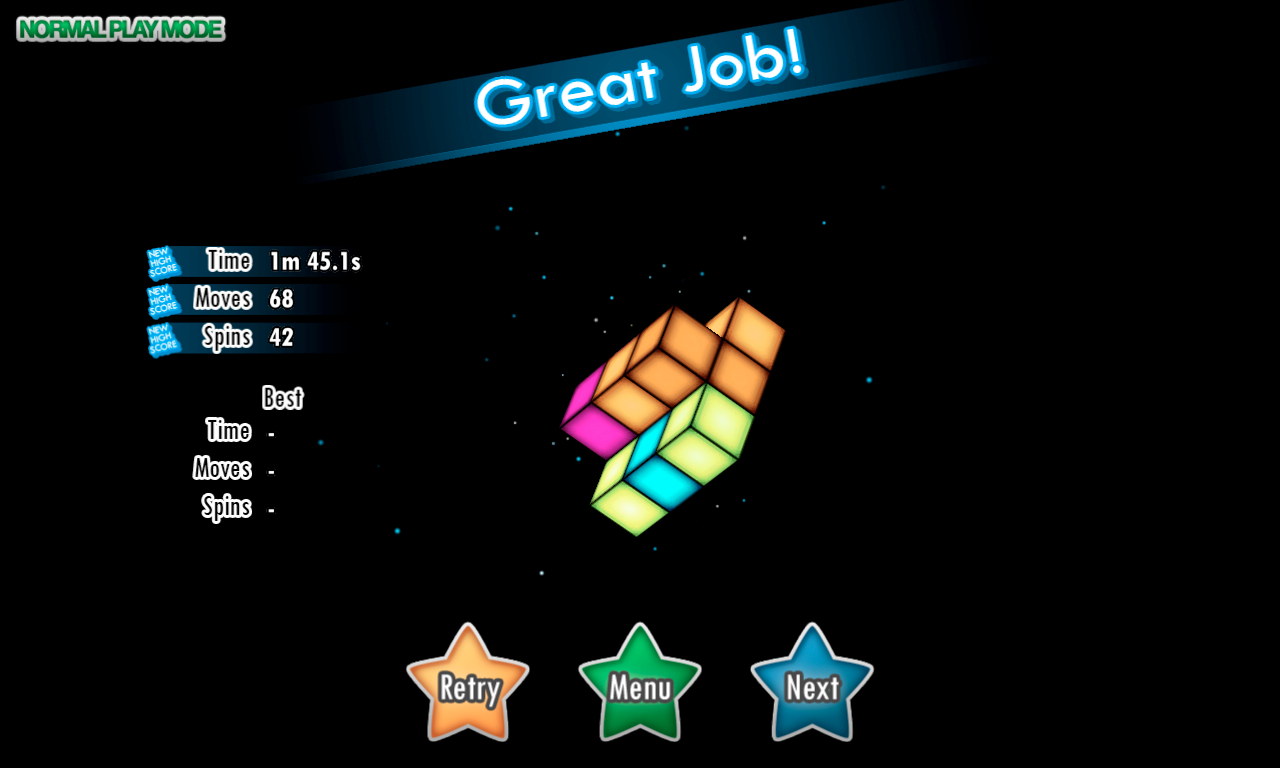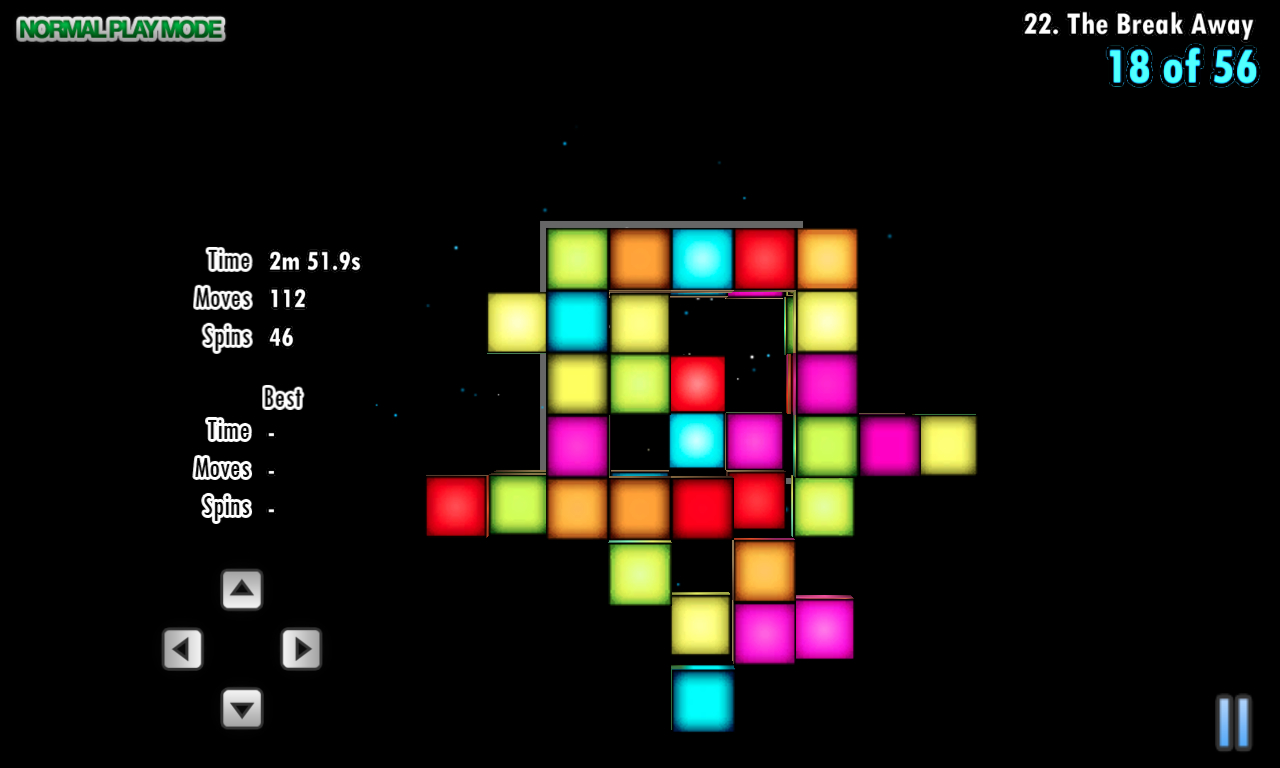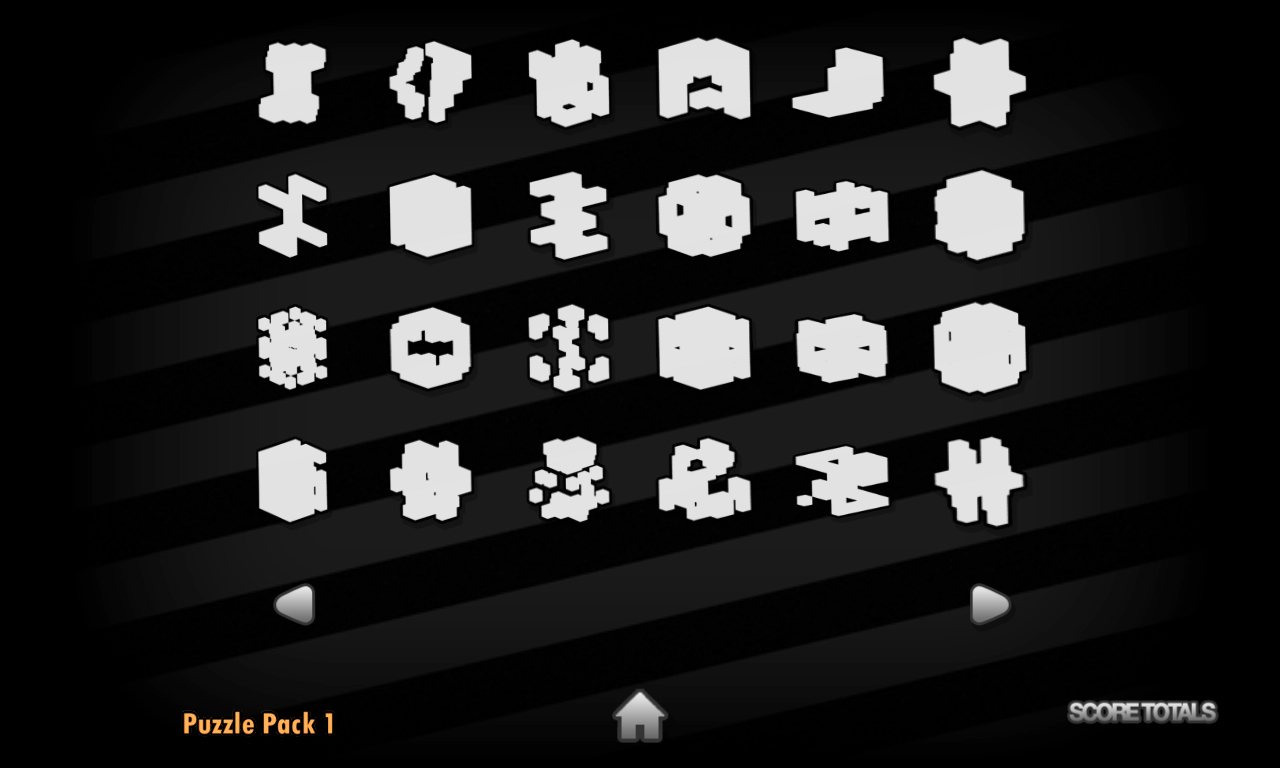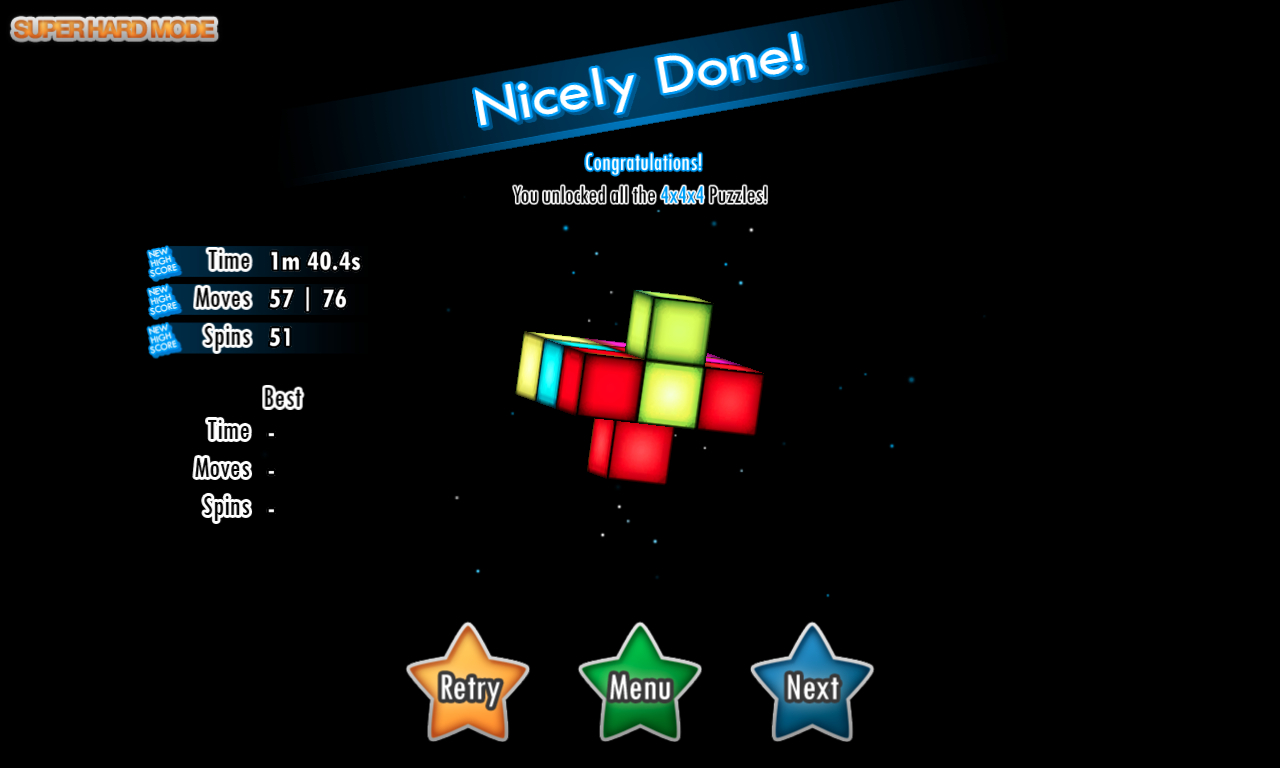Review: Qbism
Score:
61%
"Just slide the blocks into the space that we've drawn". That's the simple premise of Qbism from Blowfish Studio. The only catch is that you're playing in a 3-d environment, and you're going to need all your spatial recognition skills to complete each level in this intense jigsaw style puzzle game.
Version Reviewed: 1.0.0.0
Buy Link | Download / Information Link
Floating in a black, dark, world, are the brightly coloured blocks of each level. Once you select your level, you find out what they are scattered around... a ghostly shape spinning in the center of the screen. All you can see is an outline in grey, which is meant to give you a visual of the shape that you have to build. By only giving you the outlines, you don't get a clear vision of the target shape.

That means you'll need to build up the shape with some trial and error, moving the blocks in from outside the target region. As the blocks come into place, they should help you build up an idea of the shape you have to build. Once they are all in place, the level is over. This process of visualising is the hardest part of the game for me.
You have two ways to control the game. The first is by physically moving a block one space at a time. Tap on the block you want to move once, and then slide it once the cursor is on it. You need to have it in line of sight to start a move, which may mean you need to move other blocks out of the way first.
The second move is to slide in the black space between the blocks. This will rotate your viewpoint by ninety degrees at a time, and through the sliding viewpoint you can look in any of the six directions available. The game area will always stay in the centre of the screen, which makes the mental navigation a little bit easier.

I continue to find myself spinning the viewpoint of the game when I meant to slide a block, and vice versa, while playing. I can understand you would want to keep a similar style of controls for these two related movements, but the accuracy needed to select and move a block (which means getting in the same tap zone twice in a row) forces you to slow down when playing, to make sure you are doing what you think you are doing. It is not conducive to anything other than deliberate and methodical play.
Luckily, the blocks are a variety of colours, which helps to keep their positions in mind when you change the viewpoint during the game. That said, I think there could be more graphical work here to show the game off in the best possible light. A glow and sparkle when a block first breaches the target shape (i.e. it has reached a correct place) is about the only concession to helping you build the target. I would like to see the graphics provide more clues to the player when almost all the blocks are in place and you are trying to make out where the gap is in the construction.

You have two ways of playing each level. The normal mode asks you just to complete the target shape, while 'Super Hard Mode' gives you a limited number of moves on the individual blocks to reach the target. Thankfully, spins of your viewpoint are not counted, so you can spend time spinning to try and work out routes and gaps to move blocks around (although they are recorded, along with the time it takes you to finish). When you complete a level in 'super hard mode' you also get a small gold medal icon that shows up on the screen, which gives the completists something to aim for.
The problem with Qbism comes when you reach the later levels. The increase in the volume of the central puzzle, larger than the 3x3 you start with, forces you to consider the internal hidden structure of the shape. Couple this with the increasing numbers of single blocks, and everything get a little bit unwieldy both mentally and physically. In a puzzle that fits in a 4x4x4 region, you could have up to sixty-four blocks to move (and 5x5x5 gives you 125 possible blocks). They all need to be moved individually, and with a fair amount of rotation of the target shape the player's workload rises, and it outstrips the mental rewards you get as you play through a level.
Once I stopped to think about it, Qbism feels very much like a child's building game where you have a container and need to fill it with countless numbers of identical cubes. It's actually quite a simple game, and while it can be satisfying for a three-year old, it takes a special game to create the same thrill for an older generation.
Qbism gets boring, and feels like a sisyphean job, in far too short a time.

This starts with a smart idea for a computer game, but the design and the questioning of the goals need to be challenged at every part of the process. Qbism looks wonderful, I can forgive the sometimes fiddly controls, but it becomes far too clever for its own good. When a game stops being a game, it no longer stays installed on my phone.
Qbism is a nice distraction for forty-five minutes or so, but after that it becomes a chore. At which point it's game over. After a promising start, I hoped for more.
Reviewed by Ewan Spence at
